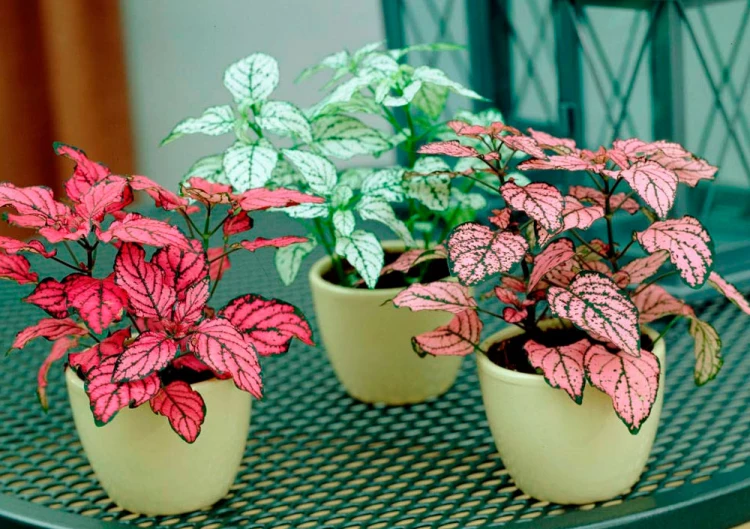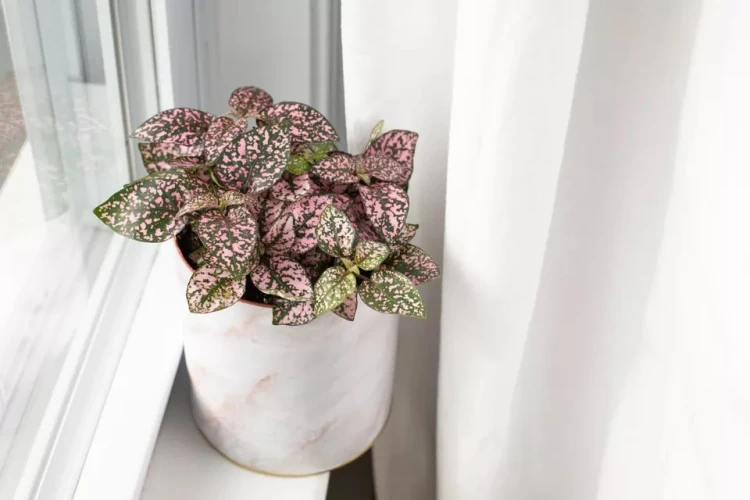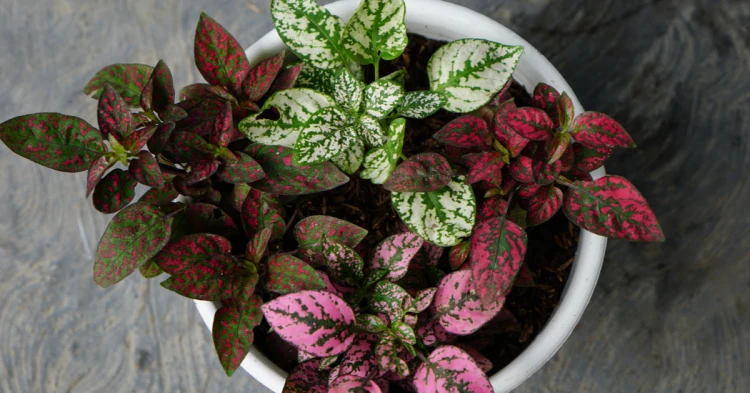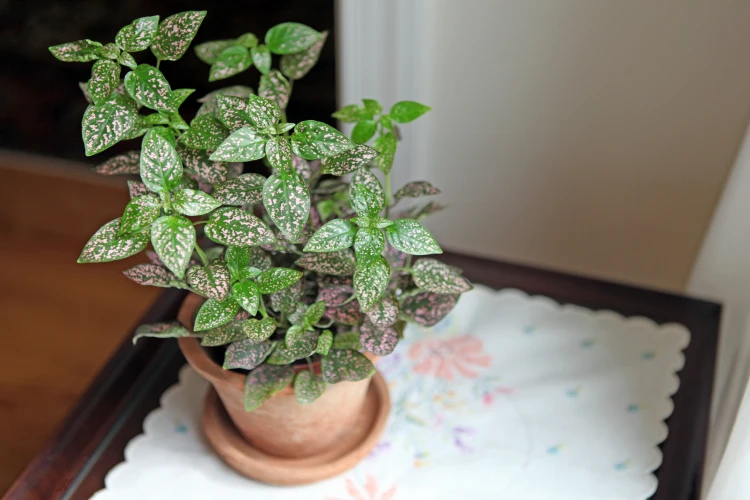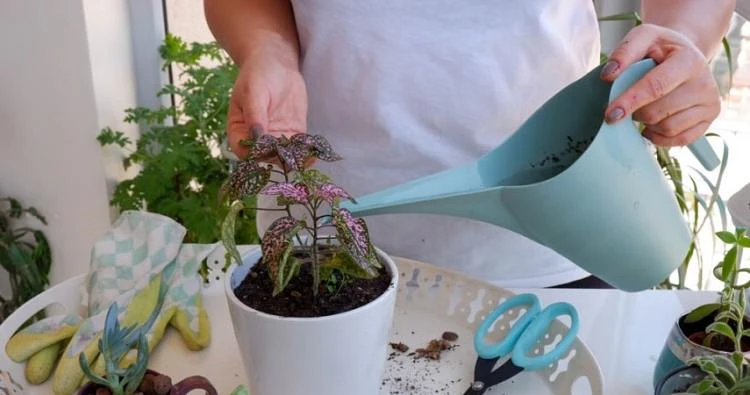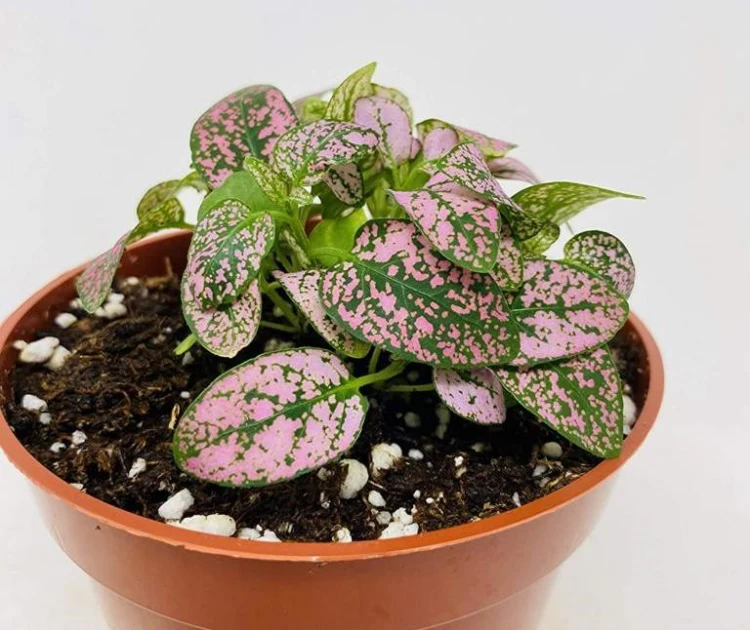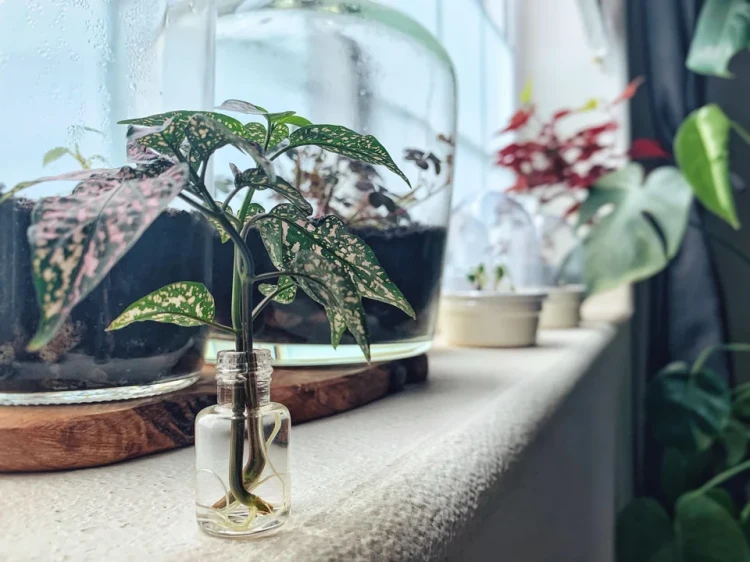Walking down the street, you can’t have failed to notice the beautiful polka dot plants on the window sills of some of the houses. This unique houseplant is known for its polka dot leaves. Hypoesthesus phyllostachya, as is its Latin name, is an exotic, delicate plant with pink, crimson or purplish leaves. It is an ornamental plant of the Acanthaceae family which comes from the tropics – Madagascar, South Africa, India and Costa Rica. In today’s article, we’ll look at how to care for a polka dot plant at home!
How to care for polka dot plant at home?
There are many types of polka dot plants. The leaves can be entirely raspberry-pink or white with green spots. The ‘Confetti’ and ‘Splash’ types are most popular because they’re smaller and are often found in homes. Hypoesthesus is completely undemanding and easy to grow at home, but this plant needs sufficient light, as the leaves lose their color when darkened. Caring for the plant is easy, and now let’s follow the basic things to observe to grow a healthy and beautiful plant.
Light
The Polka dot plant needs plenty of natural light, but never direct sunlight. This is absolutely inadvisable. In winter, it is a good idea to provide additional light, because the plant needs it during this period as well. As the sun is usually not very pleasant then, and it is darker outside, it is a good idea to use lamps. This is essential as the beautiful spots on the leaves will slowly start to disappear if it is in shade. Hypoesthesus grows best in western or eastern windows. It is recommended to rotate the plant at least once a week so that all the leaves receive an even amount of light.
Temperature
As a tropical plant, the polka dot loves the heat. That’s why you need to make sure it’s placed in a warm, sunny room. For example, the optimum room temperature in spring and summer should be between 74°F – 77°F (23°C – 25°C). A sharp drop in temperature will have a negative effect on the plant. As mentioned above, light should be sufficient. In a dark room, the leaves may turn brown or even fall off. In autumn and winter, temperatures in the range of 17-18°C (62°F – 64°F) are best. It is also good to know that the plant should not be placed near heaters in winter.
Humidity
You need to provide sufficient humidity for the plant. Mist the leaves regularly using a spray bottle with soft water, it is even advisable to use rainwater. It is preferable to spray throughout the year. If the indoor air is dry, it is fine to mist the plant even twice a day. Another alternative is to place the pot on a spacious tray with moss or ceramsite sand and water. However, make sure the bottom of the pot is not submerged in water.
Watering
In addition to moisture and light, the plant needs a lot of water. It evaporates it intensively through its leaves and needs abundant watering, especially in spring and summer. Do not allow the root collar to dry out completely, as this will cause the leaves to fall off. As the weather gets colder, gradually reduce the amount and frequency of watering. In winter, water the plant two days after the topsoil has dried. Use tap water at room temperature – ice-cold water can lead to pests such as thin roundworms.
Soil and fertilization
To grow well, the plant must be in good soil. In order to enjoy its magnificent leaves, you need to make sure that you provide it with enough nutrients. To do this, you should use commercially available organic fertilizers or homemade compost. Fertilize once a month to keep the soil in good condition and supply the plant with enough nutrients. Organic fertilizers increase the humus content of the soil, enhance soil life and permanently improve it. Fertilizers should be high in potassium, which is contributes to the bright leaf color.
What are the propagation methods of the polka dot plant?
There are two methods of propagating Hypoesthesia – by seed or cuttings.
As for seeds, it is best to sow them as early as March. Florists plant them in greenhouses covered with a light layer of soil, where they are grown at a temperature of 55°F – 65°F (13°C – 18°C). Such greenhouses are properly ventilated. After a few months, Hypoesthesia seedlings look like full-grown flowers.
The method with cuttings can be carried out throughout the year. The size of the cuttings is not important as long as they have at least 2-3 nodes. Rooting can be done in water mixed with charcoal and the temperature is recommended to be between 72°F – 75°F (22°C – 24°C). Once rooted, the seedlings can be transplanted into pots with nutrient substrate.

